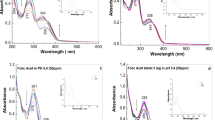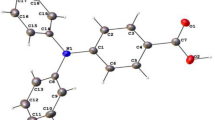Abstract
A WIDE variety of phosphate esters have great importance as intermediates in biological reactions. Development of adequate procedures for the chromatography and detection of these phosphate esters has, in many respects, lagged behind. With the exception of the method of Runeckles and Krotkov1, which was developed as a modification of the procedure of Wade and Morgan2, the detection of phosphate esters on paper chromatograms has been very laborious and relatively insensitive. Most of the molybdate procedures, in addition to requiring many manipulations, have the disadvantage of employing perchloric acid, which weakens the paper and causes some charring during heating.
This is a preview of subscription content, access via your institution
Access options
Subscribe to this journal
Receive 51 print issues and online access
$199.00 per year
only $3.90 per issue
Buy this article
- Purchase on Springer Link
- Instant access to full article PDF
Prices may be subject to local taxes which are calculated during checkout
Similar content being viewed by others
References
Runeckles, V. C., and Krotkov, G., Arch. Biochem. Biophys., 70, 442 (1957).
Wade, H. E., and Morgan, D. M., Nature, 171, 529 (1953).
Pfennig, N., Naturwiss., 44, 537 (1957).
Author information
Authors and Affiliations
Rights and permissions
About this article
Cite this article
ROREM, E. Ultra-violet Fluorescence of Quinine Sulphate for Detection of Phosphate Ester Spots on Paper. Nature 183, 1739–1740 (1959). https://doi.org/10.1038/1831739b0
Issue Date:
DOI: https://doi.org/10.1038/1831739b0
Comments
By submitting a comment you agree to abide by our Terms and Community Guidelines. If you find something abusive or that does not comply with our terms or guidelines please flag it as inappropriate.



